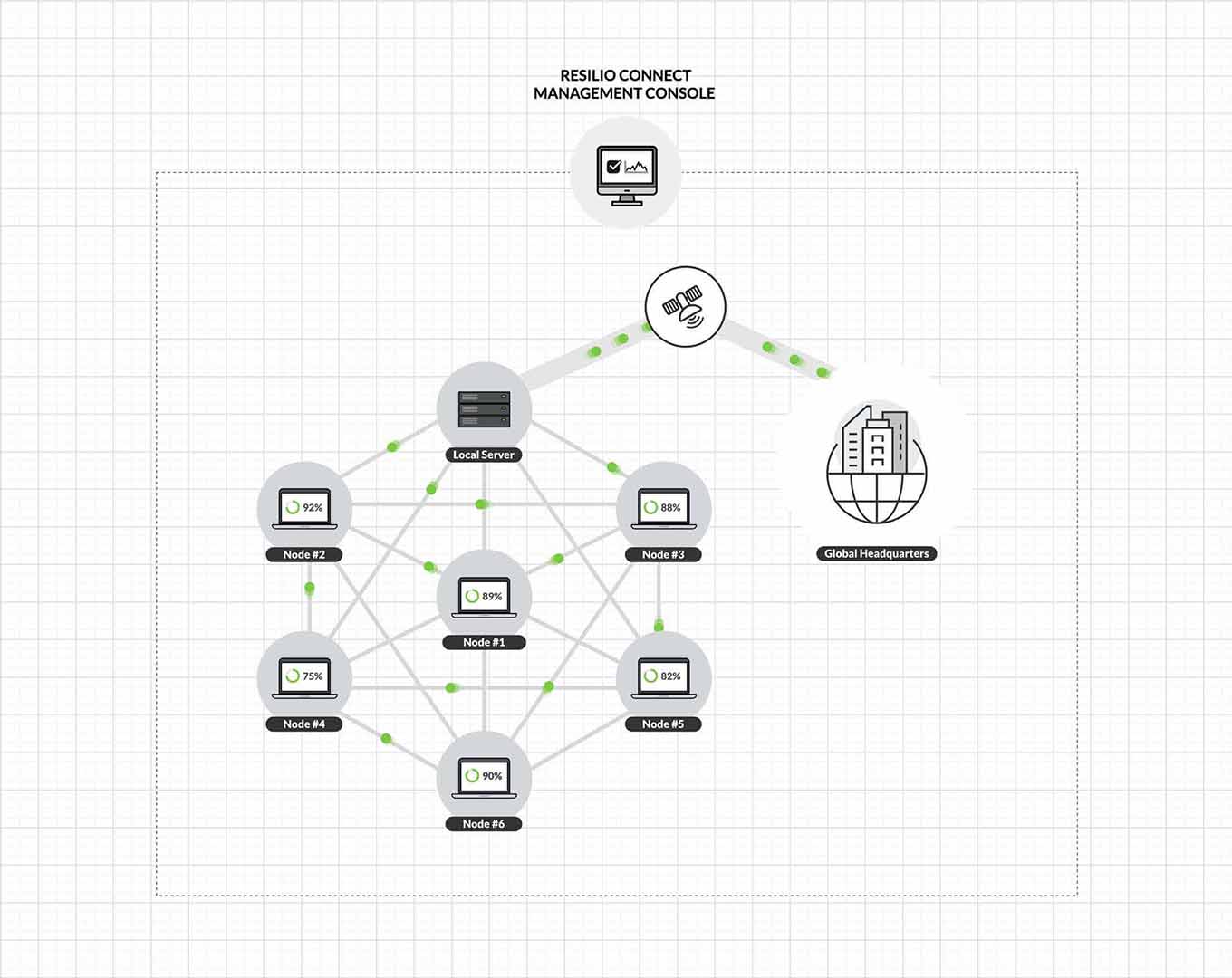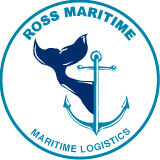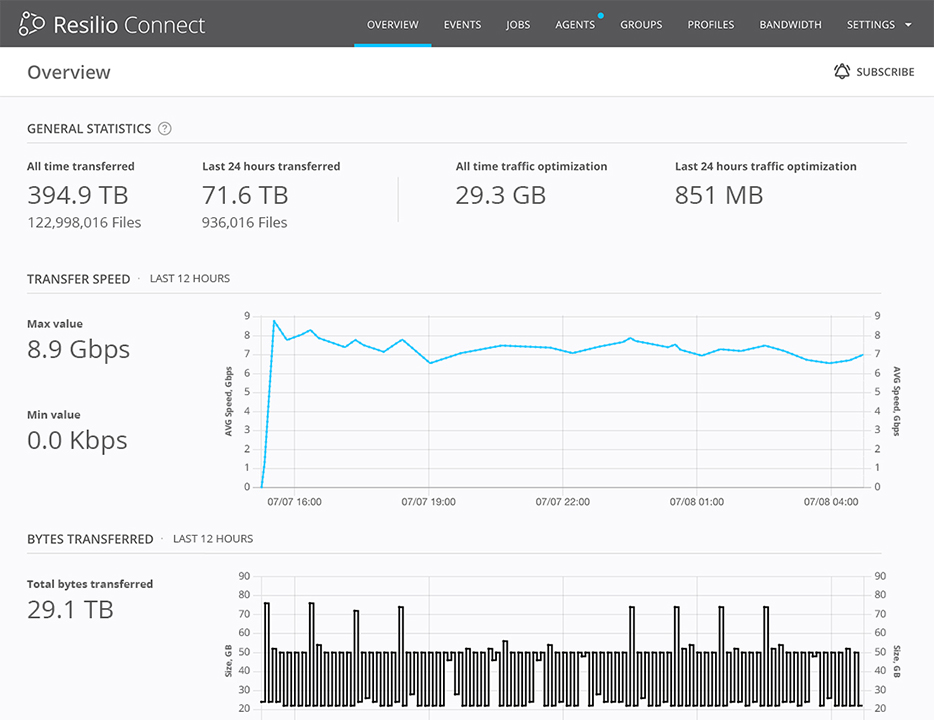
National Geographic fleet operator uses Resilio Platform for nature photography and logistics
Introduction
Data is increasingly critical for modern maritime operations, in support of basic logistics to more complex digital transformation initiatives. But the maritime data environment is uniquely unforgiving. At sea, bandwidth is scarce and unreliable, where inefficiency of any sort considerably compounds the problem.
This case study describes how Lindblad Expeditions used Resilio Platform to solve the vexing problems posed by maritime connectivity to deliver data intensive initiatives that improve operations and enhance their product offering.
Lindblad Expeditions Global Fleet of Explorers
Lindblad Expeditions is a global pioneer in ecotourism and nature photography. The company owns and charters a fleet of ships providing photographic expeditions, in partnership with National Geographic, to extraordinary locations, including Antarctica, Patagonia, South East Asia, the Baltics, Alaska and the Arctic. Onboard each ship a resident National Geographic photographer shares their photographic expertise with an exclusive ecotourism group of professional and prosumer photographers.
The ocean fleet includes eight flagship vessels: National Geographic Explorer; the National Geographic Orion; the National Geographic Endeavour II; the National Geographic Islander; the National Geographic Sea Bird; the National Geographic Sea Lion; the National Geographic Quest and the National Geographic Venture.
Lindblad IT supports a unique combination of a premier passenger cruise fleet, an adventure travel company, and a photojournalism agency. Each ship is supplied with considerable IT infrastructure including multiple workstations and a file server. Operating a global fleet is a challenge for anyone in the maritime industry. It is especially challenging for a company that is solely devoted to eco-exploration and extremely remote operations, such as Lindblad Expeditions.

Key Challenges Faced by Lindblad IT Operations
Connecting the Ships to Headquarters Reliably
The fleet operates far out of range of mobile carriers. Internet connectivity on board each ship is a combination of a 256 kbps Inmarsat FleetBroadband (FBB) connection and a maritime VSAT with a 4 x 4 Mbps connection shared by 150 people. VSAT latencies on Ka and Ku band are between .8 seconds and 1.8 seconds. Average latency is one second, which is more than seven times the delay people are accustomed to hearing on VOIP or browsing the web. Connectivity is precious. Getting data on and off ships is a significant challenge.
Sending Batches of Invoices to Ships from Headquarters
Purchasing must send big batches of invoices to ships for resupply in advance of arrival at their next ports of call. These data are critical to ship logistics and continued on-time operations.
Publishing Daily Expedition Reports
Onboard each cruise is an expedition team that compiles daily expedition reports, and write-ups that include pictures and stories talking about the experience that guests had that day. These daily reports are often large files and published as a competitive differentiator in service to the National Geographic brand in eco-tourism.
Fleet Maintenance Software, Replicating Database
The fleet maintenance software is how each ship places orders for spare parts and maintenance items. Timely database replication is mission critical because any delay in the process can cause major problems if ships leave dock before spare parts arrive.
Before Using Resilio Platform
Lindblad faced a compounding problem that seemed to grow worse by the day. Operational data needs on each ship were expanding, but the connectivity to service them was not. Furthermore, the connectivity that was available was unreliable and inefficiently utilized by existing products.
If connectivity is unreliable, the user experiences a steady diet of dropped connections and application timeouts. When the underlying products are not built to accommodate this type of connectivity, the result will be more and more bandwidth wasting retransmission of data already sent, invariably leading to more dropped connections and application timeouts over a saturated link. The nature of Lindblad operations frequently took vessels to extremely remote areas where this problem would quickly spiral out of control. Critical data would queue up behind retransmitted files that had already been partially sent, leading to significant operational degradation and unreliability. Given the mandate to increase reliability, each ship was then allocated a set time to transfer, based on its position and VSAT coverage. Ships couldn’t automatically resume file sharing until the next allocated time slot.
Why was bandwidth made even more scarce as a “solution” to the problem of scarce bandwidth? Because it was necessary to minimize the deleterious effects of inefficient products wasting bandwidth in the first place. Even so, as a solution it was operationally complex and ultimately inadequate. Script automation helped, but it was never enough to achieve mission critical resiliency or accommodate the rapidly expanding data needs onboard each ship. Eventually this became an acute problem, particularly in receiving daily voyage expedition portfolio reports. Getting these reports in on time became a daily struggle for crews.
The problem eventually required a dedicated crew member on each ship to babysit the FTP servers. Crews supervised each transfer of a couple hundred megabytes, which could take from 40 minutes to all day, depending on where the ship was operating in the world. Significant crew time was wasted handholding servers just to make sure reports uploaded each day. The process was fraught with human error and delivered inconsistent results. Implementing necessary database replication added to the pain. Whenever the SFTP server used for replication disconnected mid-way through a replication job, the crew would have to wait another 4 hours before trying again. Lindblad IT, searching for a better way to transfer and synchronize files to replace FTP and other products, discovered Resilio Platform’s parallel distributed file technology.
Transformative Benefits of Resilio Platform
In technical trials, Resilio Platform proved itself to be: easy to set up, easy to use, and extraordinarily resilient. It works over FBB satellite and is now fully deployed over VSAT.


Today with mapped folder pairs:
Staff onboard ships can drop content into folders, without worry, knowing that everything will appear at headquarters on time.
Headquarters can replicate software and databases, and push content to ships, with reliable convenience.
No more daily anxiety, onboard or at IT headquarters, about making deadline on database replication. Today files replicate reliably 24/7.
No more need for crew to watch servers and restart them every 4 hours, as was required prior to adopting Resilio Platform.
Expanding Uses of Resilio Platform
After deploying Resilio Platform, Lindblad IT pitched a demo at headquarters to show other departments the new capabilities that Resilio enables. The company continues to expand its uses of Resilio technology.
Distributing Safety Manuals
Distributing safety manuals and updates via Resilio Platform has become an easy way for the shoreside team to publish updated safety information to each ship by simply dropping the file into a folder. Before using Resilio’s solution the team had to use an FTP method and assign a crew member on board each ship to supervise the transfers. Version control of content has become effortless with Resilio Platform: Ships are each given read-only access to their safety information, receiving the latest information from the shoreside team, who make sure that ships are not using out-of-date content.
Lindblad shoreside staff can quickly see when a version needs to be updated, drop in the new content, send it to the appropriate ship, and the ship remains current with the latest safety information.
"Resilio Platform has been a game changer. It’s proven to be reliable in file transfer, It’s proven to be reliable in database replication. Overall, Resilio Platform jobs are very easy to set up and they just work!"– IT Developer at Lindblad Expeditions
Industry
Marine













